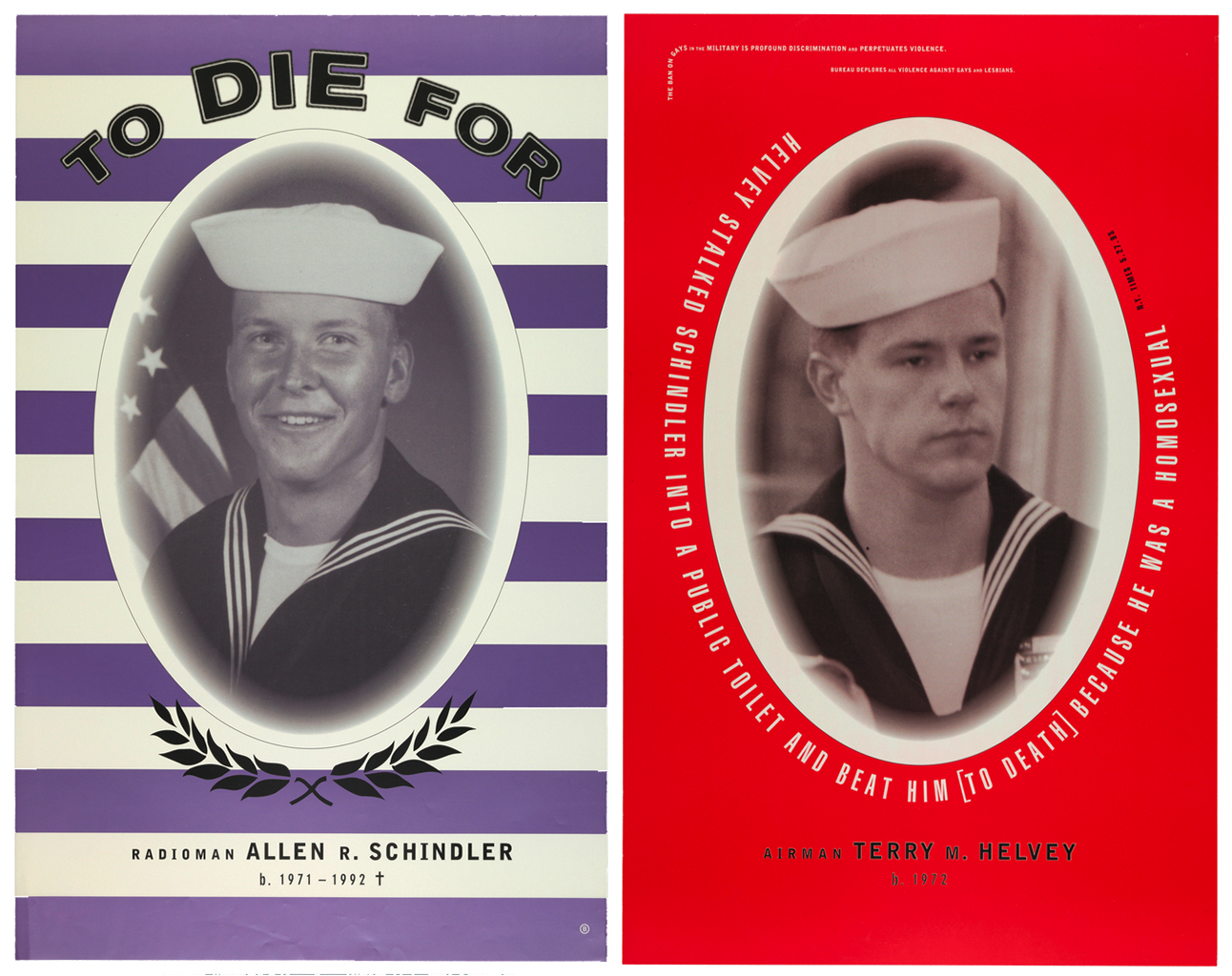
In 1992, Allen R. Schindler was murdered in a brutal hate crime. He was 22 years old. Schindler, a sailor in the U.S. Navy, had recently informed his ship’s commander that he was gay, triggering the military’s automatic policy to discharge gay service people. Unnerved by the hostile environment of his ship, Schindler already feared for his life and wanted to leave the military. He wrote in his journal, “More people are finding out about me. It scares me a little. You never know who would want to injure me or cease my existence.”[i] Alas, he was followed and beaten to death in a public restroom by airman Terry M. Helvey, who hated Schindler for being gay. The Navy hid the circumstances and motivation of the murder from everyone—even Schindler’s own mother, Dorothy Hajdys. She and others began to learn the truth when the military newspaper Pacific Stars and Stripes reported that the Navy was actively covering up a hate crime.
Schindler’s murder and the Navy’s coverup stirred national and international anger. Activists pointed out that the military’s anti-gay policies stoked violence on military ships and bases. The case contributed to the passage of the so-called “Don’t Ask, Don’t Tell” law (Defense Directive 1304.26), a military policy that prohibited gay service personnel from discussing their sexual orientation or relationships—a flawed and halting step towards securing gay rights in the military. When Helvey was sentenced to life in prison, Queer Nation spokesperon Michael Petrelis said, “This sentence sends a message that it is not O.K. to kill gay sailors and that homophobic violence will be punished.”[ii]
The New York City design firm Bureau, founded by Marlene McCarty and Donald Moffet, wanted to send a message, too. They created a pair of posters to honor Schindler’s life and condemn his murder. The first poster presents Schindler’s smiling face against a background of white and purple stripes. The headline “To Die For” dramatizes the collision of this young man’s promising future with the horror of his murder. The second poster shows Helvey, the killer, against a red background, annotated with details about the killing. Designed to be displayed together, the posters were pasted on construction hoardings in a checkerboard pattern.

Poster, To Die For: Allen R. Schindler, 1993; Designed by Marlene McCarty (American, born 1957) and Donald Moffett (American, born 1955), Bureau; Offset lithograph on paper; 93.3 x 61.0 cm (36 3/4 x 24 in.); Gift of Unknown Donor, 1994-114-2
![A black-and-white photograph in an oval frame shows a young white man in a sailor’s hat and uniform. The background of the poster is red. The man is identified as Airman Terry M. Helvey, b. 1972. Additional text reads, “Helvey stalked Schindler into a public toilet and beat him [to death] because he was a homosexual. N.Y. Times 5.27.93. The ban on gays in the military is profound discrimination and perpetuates violence. Bureau deplores all violence against gays and lesbians.”](https://www.cooperhewitt.org/wp-content/uploads/2022/05/268576_ff95163f0d72422b_b-198x300.jpg)
Poster, To Die For: Helvey Stalked Schindler, 1993; Designed by Marlene McCarty (American, born 1957) and Donald Moffett (American, born 1955), Bureau; Offset lithograph on paper; 93.8 x 61.0 cm (36 15/16 x 24 in.); Gift of Unknown Donor, 1994-114-3
Writer Dan Cameron, in a 2019 interview with Moffett, recalled seeing these beautiful and moving posters back in 1993. He said, “You gave me a place to feel, ‘I have the right to mourn Allen Schindler as a fellow human being who was butchered through hatred but deserves to be remembered with love as well.’ And that’s kind of about his place in nature, not his place in a social history.”[iv] As a teenager growing up in Chicago Heights, Illinois, Allan Schindler dreamed of serving on an aircraft carrier. Shortly after his 18th birthday, he joined the Navy, where he soon learned how hostile the environment could be.[v] His life, and his mother’s struggle to expose the full truth, are dramatized in the 1997 TV film Any Mother’s Son.
Notes
[i] Quoted in Douglas Crimp, Melancholia and Moralism: Essays on AIDS and Queer Politics (Cambridge, MA: MIT Press, 2002).
[ii] Quoted in James Sterngold, “Killer Gets Life as Navy Says He Hunted Down Gay Sailor,” The New York Times, May 28, 1993, https://www.nytimes.com/1993/05/28/world/killer-gets-life-as-navy-says-he-hunted-down-gay-sailor.html.
[iii] E-mail correspondence with Marlene McCarty, 2020.
[iv] Quoted in “Donald Moffett with Dan Cameron,” The Brooklyn Rail, November 2019, accessed May 25, 2022, https://brooklynrail.org/2019/11/art/DONALD-MOFFETT-with-Dan-Cameron.
[v] Sterngold, “Killer Gets Life as Navy Says He Hunted Down Gay Sailor.”